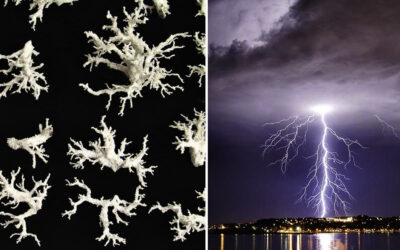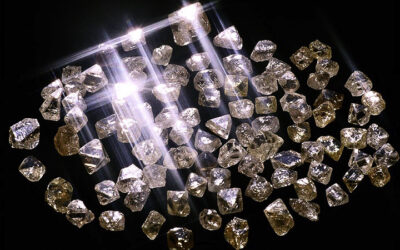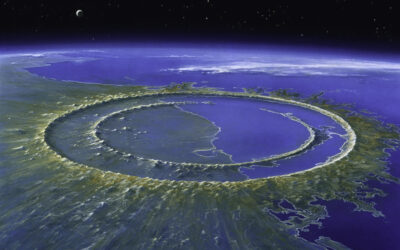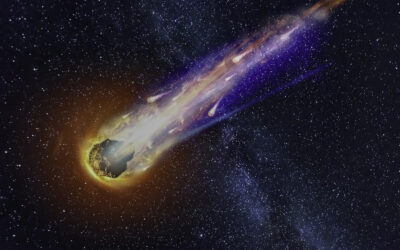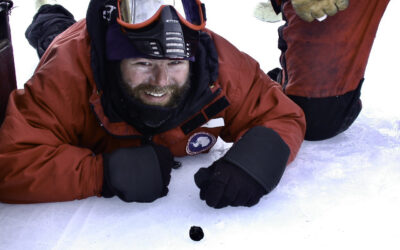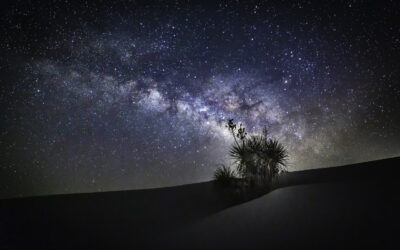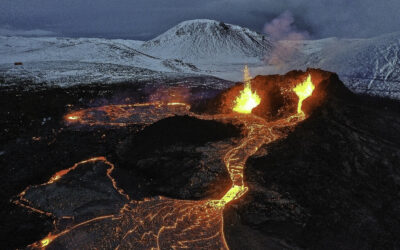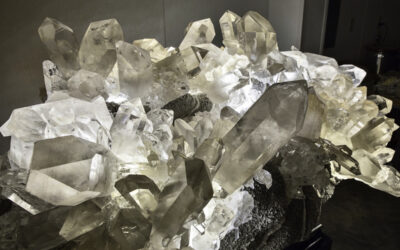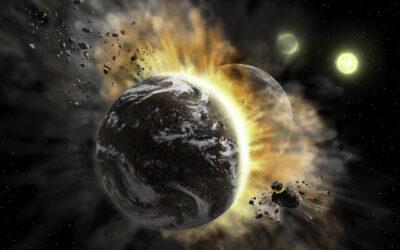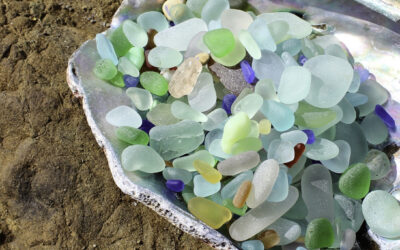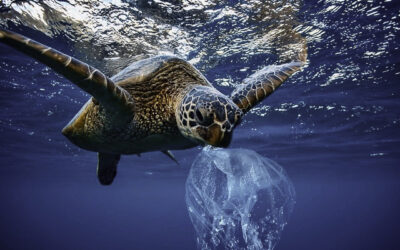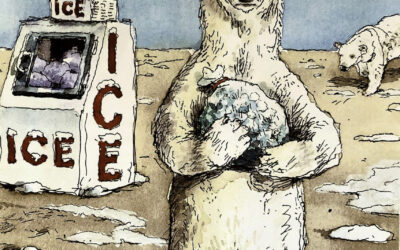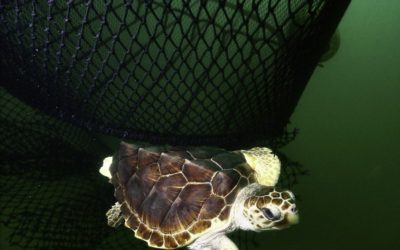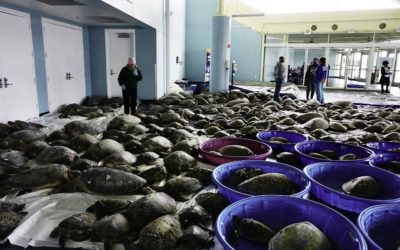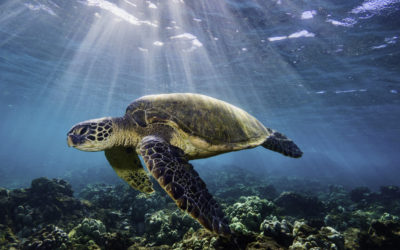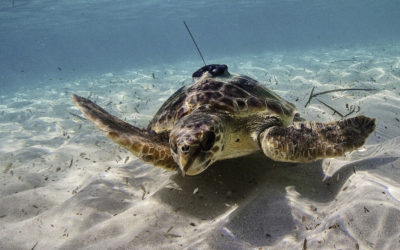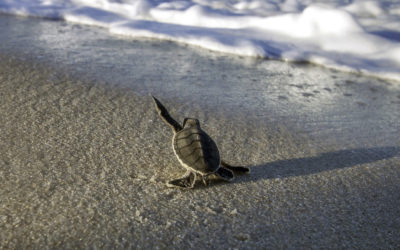To view the full content of each post, please click on the title, featured photo or on “read more” after the post intro.
For a list of all posts without images and preview text, click here. Thank you!
ePostcard #134: Glass in Nature (Part 9)
LIGHTNING STRIKES & FULGURITES “Fulgur” is the Latin word for lightning. Cicero, a philosopher of the Roman Empire era, used the expression “condere fulmina,” meaning “to dig up thunderbolts” —indicating early Romans had knowledge of fulgurite formation in sandy areas...
ePostcard #133: Glass in Nature (Part 8)
DIAMONDS IN THE ROUGH
Throughout its history, Earth has been repeatedly hit by large meteorites. Of the more than 60,000 meteorites that have been discovered on Earth, most come from the Asteroid Belt. If a meteorite strike is large enough to form an “astrobleme” (from Greek astron ‘star’ + blēma ‘wound’), the bedrock, sand, or soil beneath and surrounding the impact site typically undergoes dramatic
ePostcard #132: Glass in Nature (Part 7)
IMPACT CRATERS
The meteorites, comets and asteroids that have slammed into Earth have done so with a force many times greater than the most powerful nuclear bombs ever created by humans. There are roughly 180 known impact craters worldwide and fully a third of them—including some of the biggest—are located in North America. In addition to causing tremendous immediate devastation in the impact zone where they land,
ePostcard #131: Glass in Nature (Part 6)
CHEMISTRY OF LIFE: CARBONACEOUS METEORITE FOOTPRINTS
We know that the chemistry of life runs on organic compounds—molecules containing carbon and hydrogen, but also oxygen, nitrogen, silica and a host of other elements. Understanding how these organic compounds found their way to our planet has been the subject of intense research for the last two decades. While commonly associated with life, organic molecules can also be created by …
ePostcard #130: Glass in Nature (Part 5)
ANTARCTICA’S ASUKA (A)-12236 METEORITE
During a 2012 expedition to Antarctica, a team of Japanese and Belgian researchers picked up a small rock that appeared coal black against the icy snow. Now known as meteorite Asuka 12236, it was roughly the size of a golf ball. Despite its modest size, this space rock was a colossal find. As it turns out, Asuka 12236 is one of the best-preserved carbon-rich meteorites ever discovered. The Antarctic-based setting of its recovery means that the meteorite has undergone …
ePostcard #129: Glass in Nature (Part 4)
Meteorites
This stunning photo of the Milky Way over the dunes of White Sands National Park was part of an invitation to join park rangers in August 2021 to observe this year’s spectacular Perseid Meteor Shower. Silicon is present in the sun and stars and is a principal component of a class of meteorites known as aerolites.
ePostcard #128: Glass in Nature (Part 3)
GLASS IN NATURE: GEOLOGIC ORIGINS
This dramatic image captures volcanic glass in the making in Iceland! A long-dormant volcano on the Reykjanes Peninsula in southwest Iceland flared to life last March after tens of thousands of earthquakes were recorded over a 3-week period. The volcano is located about 25 miles from Reykjavik, Iceland’s capital city, and was the area’s first volcanic eruption in nearly 800 years. The spectacular volcanic eruption disgorged
ePostcard #127: Glass in Nature (Part 2)
CRYSTAL SILICA ROCKS!
Twelve different crystal modifications of silica are known, the most common being quartz. It is the second most abundant mineral in the Earth’s continental crust, and it is a major constituent of sand globally and rocks such as granite and sandstone. Quartz also occurs in a pure form (without impurities) as a clear, colorless rock crystal, as you can see in the photo of the Arkansas “Bouquet” quartz crystal cluster. Most examples of quartz are clear, frosted, or found as milky-white grains of small size that don’t display crystal faces.
ePostcard #126: Glass in Nature (Part 1)
BORN OF EARTH & FIRE
Glass is born of earth and fire, and our modern world would be unrecognizable without this remarkable material in our lives. Most people think of glass only as a manufactured material, but glass is also created as a result of natural processes operating at the Earth’s surface—volcanic eruptions, lightning strikes, meteorite and asteroid impacts, and other high-heat geologic phenomena. Silicon (Si) is the second most common element on our planet after oxygen. About 60 percent of the Earth’s crust contains silicon in the form of …
ePostcard #125: Sea Glass Lessons
Sea Glass
When I was growing up, collecting sea glass was a favorite beach pastime in New England, the wave-tumbled cabochons in hues of aquamarine, amethyst, and cobalt glass hinting at a bygone era that I could only imagine. I would hold each piece up to sun to enjoy the sheer glory of the colors. The sea glass and sea pottery treasures I found might have begun their odyssey
ePostcard #124: The Plastic Tsunami
Photo Credit: Courtesy of Florida Sea Grant. THE PLASTIC TSUNAMI Sea turtles have spent the past 100 million years roaming seas free of plastics. Today, the global impacts of plastic pollution on marine biodiversity are among the greatest environmental challenges of...
ePostcard #123: On Thin Ice!
ON THIN ICE! When I need to recover my bearings as a science writer, I often circle back to my fascination with polar regions. Sea ice has been very much on my mind lately, and especially the prospect of an ice-free Arctic in the not so distant future. The extent and...
ePostcard #122: Fisheries Bycatch
Photo Credit: Courtesy of NOAA. A juvenile loggerhead sea turtle escapes a trawler net that has been quipped with a Turtle Excluder Device (TED). These sea turtle "escape hatches” were originally developed to benefit both the commercial shrimp fishery and the marine...
ePostcard #121: Cold Stunning
Photo Credit: Courtesy of Miguel Roberts/The Brownsville Herald (MIGUEL ROBERTS AP) Thousands of Atlantic green sea turtles and Kemp's ridley sea turtles suffering from cold stun are laid out to recover Tuesday, Feb. 16, 2021 at the South Padre Island Convention...
ePostcard #120: A Flipper of Hope
Photo Credit: Courtesy of Tim Briggs, Northeastern University (Marine Biology), and the online journal Massive Science. (Green sea turtle, San Diego Bay) If there is danger in the human trajectory, it is not so muchIn the survival of our own species as in the...
ePostcard #119: Sea Turtle Magnetism (Part 5)
#1. Photo Credit: Satellite-tagged loggerhead photo courtesy of Argos System (argos-system.org). Loggerhead sea turtles begin their lives by migrating alone across the Atlantic Ocean and back. Eventually, after more than two decades, the females return to nest on the...
ePostcard #118: Nightwatch: Hatchlings Away (Part 4)
Cover Photo (above) Credit and Caption: Having finally reached the wet, surf-hardened sand, this hatchling is in fast-forward mode on its final sprint to the sea. (Photo courtesy of Courtesy of Boca de Tomates Turtle Camp and Red Tortuguera A.C.)ePostcard #118:...

